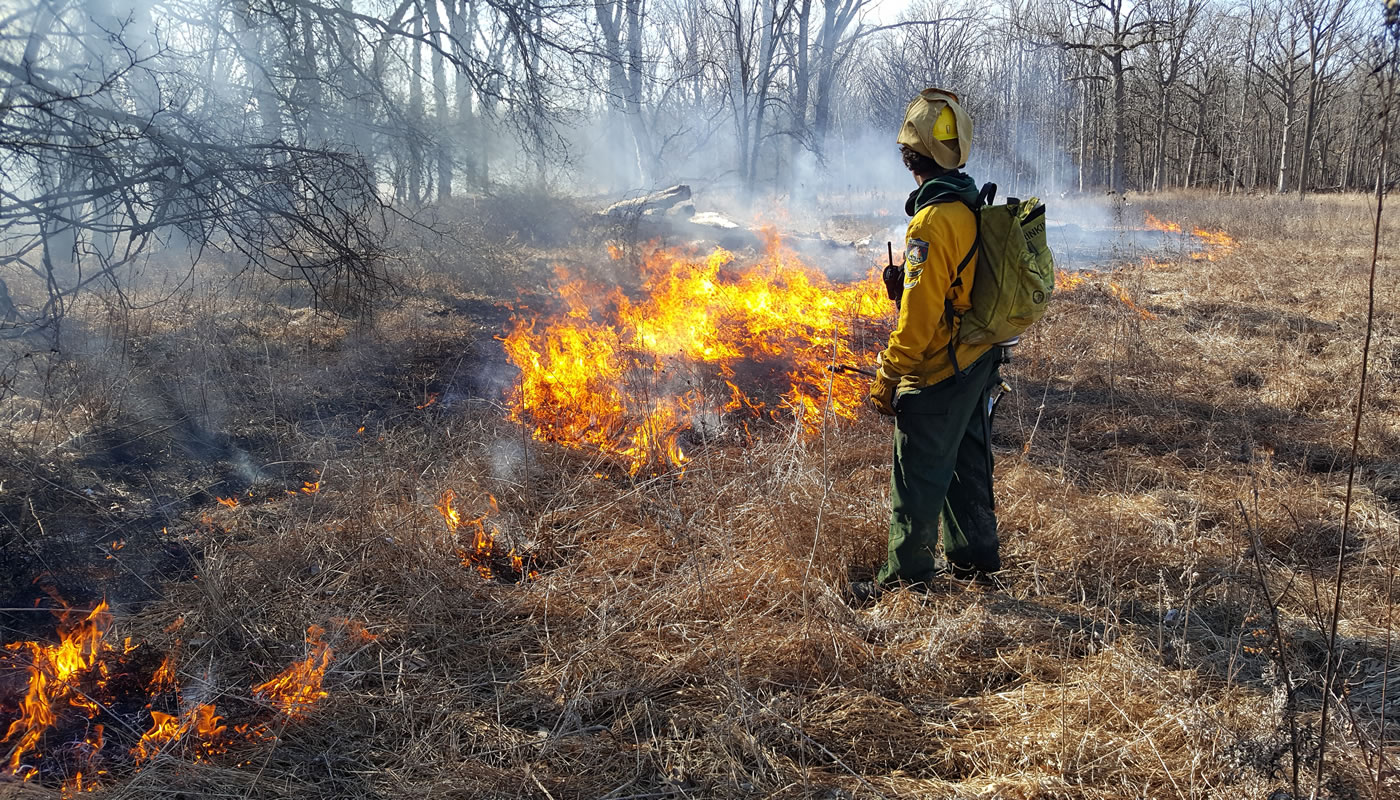Each spring and fall Resource Management crews prepare to maintain diverse habitats throughout the forest preserves with one of the most effective tools available—fire. (Burn season officially started this past weekend, with crews out at several locations across the county.)
Understanding how fire behaves and its ecological role in our natural landscape is critical to a successful burn season. Here are five things you may not know about prescribed burns:
1. Unstable atmospheric conditions are ideal
You read that correctly! Stable atmospheric conditions often produce a layer of warm air that keeps smoke at lower levels of the atmosphere where it can cause problems. Unstable conditions usually feature upper level winds that let heat rise and smoke move up and away from the burn site.
2. Liquids and gases transfer most of the heat
During a prescribed burn, heat transfers in three ways:
- Convection – heat transfer by liquids or gases (steam rising from a boiling pot of water)
- Conduction – heat transfer within a material (warm handle of the pot)
- Radiation – heat transfer over a distance (heat felt standing near the pot)
Convection, expressed through the hot air and gases rising from a fire, is responsible for about 75 to 90 percent of heat transfer during a burn.
3. Fire spreads faster uphill
While people have an easier time moving downhill, it’s just the opposite for fire. When fire is burning on sloped terrain, the heat from the fire rises and can more easily reach fuels (plant matter) on the uphill slope. Flames can also pre-heat fuels on the uphill slope. The greater the slope, the faster the fire can move.
4. Cattails mean big flames
Flame height depends on the fuel sources available. Some fuels produce much bigger flames and require greater caution. Here are typical flame heights for common prescribed burn fuels:
- Leaf litter – 1 to 3 feet
- Short grass – 6 to 10 feet
- Tall grass – 10 to 15 feet
- Cattails/common reed – 15 to 30 feet
5. Prescribed burns fight fire with fire
A prescribed burn today helps reduce the risk of a wildfire tomorrow. Our region features plant communities that evolved with fire before human intervention. Past policies of fire suppression actually increased the risk of wildfires because readily burnable fuels accumulated in many areas. Burning these fire-tolerant plant communities in a controlled manner simulates this once natural process and is one of the most effective ways to help reduce the risk of wildfires.
During burn season, residents can find out where prescribed burns are happening on our Closures & Alerts Page.

